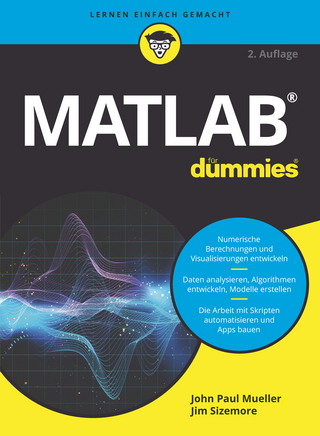
Set-Valued Force Laws
Springer Berlin (Verlag)
978-3-642-53595-6 (ISBN)
1. Introduction.- 1.1 Friction Laws.- 1.2 Literature Survey.- 1.3 Subjects and Contents.- 2. Fundamental Concepts.- 2.1 Internal and External Forces.- 2.2 The Law of Interaction.- 2.3 The Dynamic Equilibrium.- 2.4 The Virtual Work of a Dynamic System.- 2.5 Resultant Force and Inertia Terms.- 3. Rigid Body Systems.- 3.1 Preliminaries on the Vector Product.- 3.2 Rigid Body Kinematics.- 3.3 Rigid Body Kinetics.- 3.4 The Dynamic Equilibrium of a Rigid Body.- 3.5 The Virtual Work of a Rigid Body System.- 3.6 Classical Bilateral Constraints.- 3.7 Generalized Coordinates.- 4. Motion and Discontinuity Events.- 4.1 Preliminaries on Integration of Functions.- 4.2 Displacements, Velocities, and Accelerations.- 4.3 Restriction to Finite Numbers of Discontinuities.- 5. Displacement and Velocity Potentials.- 5.1 Directional Newton-Euler Equations.- 5.2 Set-Valued Force Laws.- 5.3 Scalar Potential Functions.- 5.4 On the Modeling of Force Laws.- 6. Representation of Scalar Force Laws.- 6.1 Decomposition into Unilateral Primitives.- 6.2 Variational Formulations and Upper Subderivatives.- 6.3 The Convex Case: Conjugate Potentials and Duality.- 6.4 Force Elements in Engineering Dynamics.- 7. Force Laws on Different Kinematic Levels.- 7.1 Continuity Properties of the Trajectories.- 7.2 Displacement Force Laws on Acceleration Level.- 7.3 Velocity Force Laws on Acceleration Level.- 8. Index Sets and LCP-Formulation.- 8.1 Index Sets.- 8.2 Formulation on Different Kinematic Levels.- 8.3 The Linear Complementarity Problem.- 8.4 The Dual Principle of Least Constraints.- 9. Principles in Dynamics.- 9.1 The Principle of Least Constraints.- 9.2 The Principle of Gauß.- 9.3 The Principle of Jourdain.- 9.4 The Principle of d'Alembert/Lagrange.- 9.5 Remarks on d'Alembert/Lagrange's Principle.-10. Spatial Coulomb Friction.- 10.1 Geometry of Surfaces.- 10.2 Contact Kinematics.- 10.3 Kinetics.- 10.4 Contact Laws.- 10.5 Sliding Contacts.- 10.6 Friction Pyramid for Rolling Contacts.- 10.7 Friction Cones and NCP Formulations.- 10.8 A Differentiable NCP for Rolling Contacts.- 10.9 Example and Remarks.- 11. Velocity Jumps due to C0-Constraints.- 11.1 On Impacts in Mechanical Systems.- 11.2 Mechanical Model and Problem.- 11.3 Bilaterally Constrained Motion.- 11.4 Velocity Jump by Time-Scaling.- 11.5 Velocity Jump by Reflection.- 11.6 Reflections and Collisions - Remarks.- 12. Electropneumatic Drilling Machine.- 12.1 Mechanical Model.- 12.2 Simulations.- 13. Percussion Drilling Machine.- 13.1 Mechanical Model of the Drilling Machine.- 13.2 Mathematical Model for Non-Contact.- 13.3 The Contact Model.- 13.4 State Transitions.- 13.5 Results.- 14. Turbine Blade Damper.- 14.1 The Damper Model and the Non-Contact Case.- 14.2 Contact Kinematics of the Damping Device.- 14.3 Numerical Results.- 15. Concluding Remarks.- References.
| Erscheint lt. Verlag | 22.7.2012 |
|---|---|
| Reihe/Serie | Lecture Notes in Applied and Computational Mechanics |
| Zusatzinfo | IX, 222 p. |
| Verlagsort | Berlin |
| Sprache | englisch |
| Maße | 155 x 235 mm |
| Gewicht | 367 g |
| Themenwelt | Mathematik / Informatik ► Mathematik ► Wahrscheinlichkeit / Kombinatorik |
| Naturwissenschaften ► Physik / Astronomie ► Mechanik | |
| Schlagworte | Drilling • Force Laws • Model • Modeling • Optimization • rigid body • Rigid Body Systems • Set-valued Force Laws • Simulation |
| ISBN-10 | 3-642-53595-X / 364253595X |
| ISBN-13 | 978-3-642-53595-6 / 9783642535956 |
| Zustand | Neuware |
| Haben Sie eine Frage zum Produkt? |
aus dem Bereich


